Beef rendang is an Indonesian spicy dish and no wonder the cooking is similar to our local dishes because Filipinos also have Indonesian ancestors. But this beef rendang dish has a more tedious way of preparing. You have to make a spice paste first by grinding it on the mortar and pestle and frying it before cooking the beef. Unlike most Filipino cuisines that we throw everything in the pot when cooking.
There are also some ingredients that are only indigenous to Indonesia and some parts of Southeast Asia like the galangal, very similar to ginger root in texture and shape but has a more exotic taste. But is can be substituted with ginger. Now you don’t have to go to Indonesia to taste this dish, you can cook it right in your own kitchen.
Beef Rendang: Hearty Stew Steeped in Bold Southeast Asian flavors
Dishes replete with the deep historical connections of the Philippines to its neighbors were always around. While adobo and sinigang were the usual stars of our dining table, there was always a rare occasion that my Tita Mila would prepare something really special. She’d do this stew inspired by Indonesia to fill our home with the mouthwatering aroma of exotic spices. It was like our local delicacies, but in its own distinct way. It wasn’t till much later that I learned it was a version of the legendary coconut milk spicy beef stew, a dish so known for its bold flavors and tender meat.
A Dish with Roots Deep in Southeast Asian History
This dish traces its origins to the Minangkabau of Indonesia. It was perfected by the long slow-cooked beef preparation of the Minangkabau; it has become synonymous with celebrations and tradition. Like how we have our lechon or kare-kare in our town fiestas, this stew takes center stage in special occasions here in Indonesia, Malaysia, and even in parts of Thailand.
The preparation method in itself—beef cooked until it would simmer in a ground spice and coconut milk mixture for hours—dates back centuries. It is assumed that the recipe came along as a means of meat preservation before refrigeration was invented, where the spice paste and coconut oil proved natural preservatives. This manner of cooking provided for itself ease during long traveling journeys as families carried along with them a taste of home wherever it carried it.
Preparing Spice Paste: The Heart of the Recipe
I still remember when I first tried preparing this dish in my own kitchen. I had used the stories of my uncle Ramon, who had been to Indonesia a few years ago. He stated that the whole thing was very tedious but worth the work when it was ready. Soon, I found out why.
The magic happens in the spice paste. A mixture of mashed dried chilies, shallots, garlic, and ginger, this aromatic mixture is laboriously ground with a mortar and pestle to a silky smooth consistency. Kind of a departure from the usual straightforward Filipino cooking where we just toss everything into a pot; this needs some patience and a good workout for your arm. But do not worry—you can easily use a food processor if that is what you feel like doing or if you are just starting.
Once ready, the paste is lightly fried with oil till it is aromatic. The aroma is so pungent that one cannot help but want to fill the whole kitchen. The trick is to maintain the heat as burnt paste will spoil an entire dish; when it becomes too dry, little more oil must be added. In throwing in the crushed lemongrass stalks, a few torn kaffir lime leaves, and the almost impossible-to-find galangal root (which I replaced with ginger), I couldn’t help but remember Uncle Ramon’s words of wisdom: “It’s the aroma that tells you it’s ready. If your neighbors start knocking, then you know you’re on the right track.”
Cooking the Beef: Low and Slow is the Way to Go
Once the spice paste is ready, the real action begins, which includes introducing the meat. I used beef shank for this purpose. It is one of those cuts of meat that are great for stewing as it becomes tender without falling apart easily. The beef is added to the pot, and quite a generous amount of creamy coconut milk is added into the pot. It is during this stage that patience becomes your best friend.
Some other Filipino dishes rely on high heat to quickly boil ingredients; to prepare this recipe, you have to cook it under gentle simmering for three to four hours. At that point, the beef will slowly absorb all the complexities from the spice paste and burst with a warmth and comfort in each bite. You will have to stir it from time to time and not let the coconut milk dry out too fast by covering the top.
Adding a little sugar and increasing the heat a bit to let the sauce thicken would be the finishing touches. Standing by the stove, yet to become aware of how much the sauce would reduce, reminded me of the many gatherings we used to have around the table that lasted for hours discussing and just enjoying each other’s company as food simmered away on the stove.
Presentation and Devouring the Meal
When it was finally cooked, the sauce had turned into a rich, dark coating clung to every piece of beef. I served it hot over plain steamed rice as the flavors were already complex enough without other side dishes added on. To give this slight twist, you can serve it with turmeric rice or simple Java rice and combine the nice contrast the creamy spicy stew offers.
The result was a dish that reminded me of those lazy Sunday afternoons with Tita Mila and Uncle Ramon, when the talk flowed as freely as the food. This’s not a meal you gobble through – it’s to be savored, more so the memories it stirs. So if you are adventurous about a little foray into the kitchen, then give this coconut milk spicy beef stew a whirl. Frankly speaking, the time and effort which went into it are worth all that the delicacy in each bite brings.
How to Cook Beef Rendang (Coconut Milk Spicy Beef Stew)
Ingredients
For the spice paste:
- 8 pcs dried chilies softened in boiling water and drained
- 10 pcs small shallots finely chopped
- 7 cloves garlic minced
- 3 Tbsp. ginger minced
- 2 Tbsp. cooking oil
- 5 tsp. galangal peeled, cut into thin slices (can be substituted with ginger)
- 2 stalks lemongrass pounded
- 1 pc tumeric leaf
- 5 kaffir lime leaves torn
For the beef rendang:
- 1 kilo beef briskets cut into cubes
- 1 1/2 cups coconut milk
- brown sugar or muscovado sugar to taste
- salt to taste
Instructions
How to make the spice paste:
- With mortar and pestle, grind the softened dried chilies, shallots, garlic and ginger into a fine paste.
- Heat the oil in a stew pot over moderate heat and fry the paste for 10 minutes and until fragrant.
- Be careful not to burn the paste. Keep adding some oil a little at a time if the paste becomes too dry.
- Add the galangal (or ginger), lemongrass, turmeric leaf, and kaffir lime leaves.
How to cook beef rendang:
- Add beef cubes to the fried spice paste. Stir in coconut milk and add salt to taste.
- Bring to a simmer (don't boil), cover and stir from time to time until beef is tender for about 3 to 4 hours.
- Add the sugar, increase the heat and cook a few more minutes, until the sauce has thickened.
- Serve hot with plain steamed rice, turmeric or java rice.
Notes
Cooking Tips:
Spices Should Achieve a Perfect Paste.
Use all of that fine ingredient with a smooth spice paste. Puree until no lumps are in the chilies, garlic, ginger, and shallots; a well-blended paste fries better, with more even flavors-it will never, ever burn when frying.Low and Slow for Tender Meat
The essence that will give you a tender, soft melt-in-your-mouth beef is when you have it cooked really slowly over a low heat for hours and hours. Don't boil it; let this slow-simmered stew cook for a few hours. The beef will absorb the spices as well as the coconut milk slowly, richly concentrating to give you that flavor.Stir Occasionally to Prevent Sticking
Stir the stew from time to time while you are cooking so that the bottom does not stick and burn to the bottom. The thick sauce can very easily catch on the pot as it reduces and thickens, though with great care. If the liquid is evaporating too fast add small amounts of water or coconut milk to keep the consistency correct.
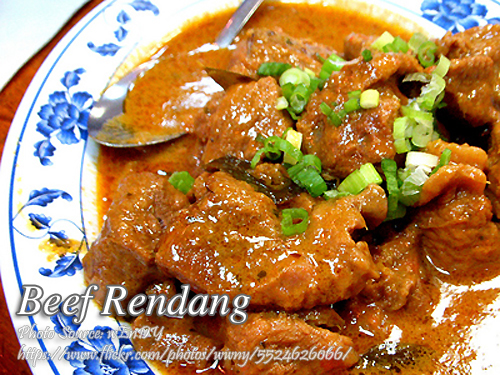

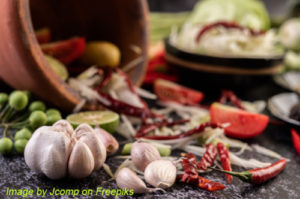
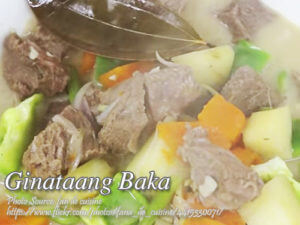
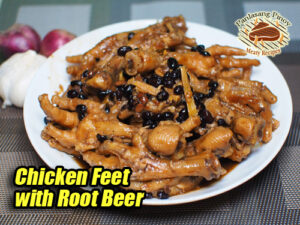
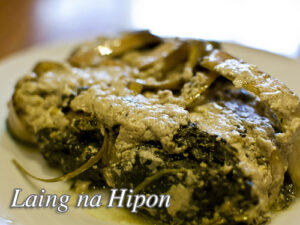
Can we cook it either in pressure or slow cooker? How long?
Hi Brenda, yes you can use pressure cooker for about 1 to 2 hours in low heat.
Dont forget to add 1 piece of star anise, 3-4 pieces of cloves, and 1 cinnamon bark.., these are available at the spice section of any hypermart 😉
Thanks for the cooking tip!
i like ur menu’s .
Thanks Ida! hoping you visit often!